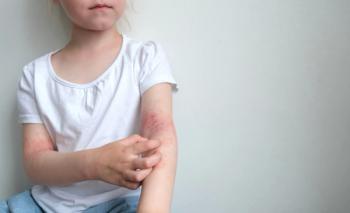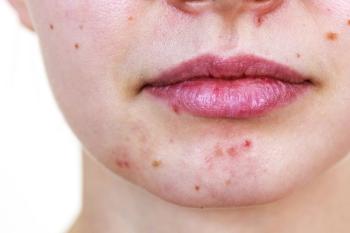
On the Shelf: Sunscreen
Joanna Lewis, PharmD, MBA, highlights data from Pharmacy Times®’ OTC Guide and discusses practical information on the selection of sunscreen to prevent skin damage and cancer.
Episodes in this series
Transcript:
Joanna Lewis, PharmD, MBA: Hello, and welcome to this episode of Pharmacy Times®’ “On the Shelf.” In this series we are exploring some information about a variety of over-the-counter products, which are impactful to consumers and also provide opportunities for pharmacists to share their insights. Products featured in this series come from the Pharmacy Times®’ OTC Guide. Now, in its 25th year, the guide features pharmacists’ top recommended products and brands covering more than 800 specific products from 148 categories based on a national survey. Pharmacy Times® also partners with U.S. News & World Report, an authority in rankings and consumer advice, to bring these pharmacist recommendations to consumers nationwide. With that said, let’s see what’s on the shelf.
Today, let’s talk about sunscreens. Skin cancers are the most common forms of cancer in the United States—accounting for more than all other cancers combined—with 1 in 5 Americans developing skin cancer by the time they are 70. Ultraviolet, or UV, light is a proven carcinogen and sun exposure is a key contributor. On average, a person’s risk for melanoma doubles if they have had more than 5 sunburns, but just 1 severe sunburn in childhood or adolescence more than doubles a person’s chances of developing melanoma in life. Protection from the sun and UV exposure is something everyone can do and wearing sunscreen is a great way to help prevent this and sunburn.
Based on the OTC Guide 2021 provided by Pharmacy Times®, it is estimated that there are over 898,000 recommendations made by pharmacists for sunscreens each month. Among sunscreens, Neutrogena was the brand pharmacists recommended most often, with Coppertone and Banana Boat following close behind. Other options, and my personal favorites, include Sun Bum, Blue Lizard, and Babyganics. Whatever sunscreen brand you choose, you will likely have many options. For example, Neutrogena offers a variety of sunscreens for adults and children that are either mineral-based, with ingredients like zinc oxide or titanium dioxide, or chemical-based, with ingredients like avobenzone and octisalate. They are available as lotions, gels, sticks, and sprays.
Whether it’s for a family going on vacation to Florida or a patient who may be taking medications that makes them more photosensitive, there are a few things to keep in mind when selecting a sunscreen: Choose a sunscreen that has broad spectrum protection against UVA and UVB rays. UVB is more responsible for sunburn while UVA coverage contributes to wrinkles and signs of aging. The words “broad spectrum” should be on the label. Look for an SPF, or sun protection factor, of 30 or higher. The higher the number, the more protection the sunscreen offers and SPF of 30 protects against 97% of the sun’s UVB rays. Many products describe themselves as sweatproof, but no products are waterproof, and tend to wipe off when towel drying. Reapplication of sunscreen is recommended every 2 hours.
Lastly, while sunscreens are very effective to avoid sunburn, it's always good practice to cover up exposed skin, when possible, stay in the shade, and avoid sunlamps and tanning beds. Protection against the sun should be a year-round effort, even on cloudy or rainy days. Keeping these points in mind will help advise consumers and patients and match them up with products that they will enjoy using and that will keep them safe on the beach or at home in the garden.
That’s it for this episode of “On the Shelf.” We thank you for watching. Keep an eye out for our next episode, and in the meantime, check out more pharmacist recommendations and practical advice at
Transcript edited for clarity.
Newsletter
Stay informed on drug updates, treatment guidelines, and pharmacy practice trends—subscribe to Pharmacy Times for weekly clinical insights.














































































































































































































